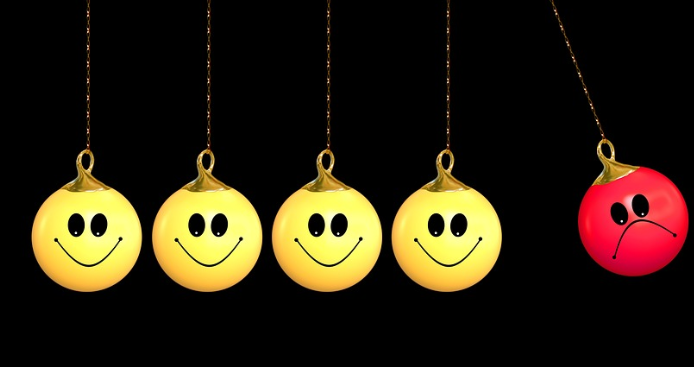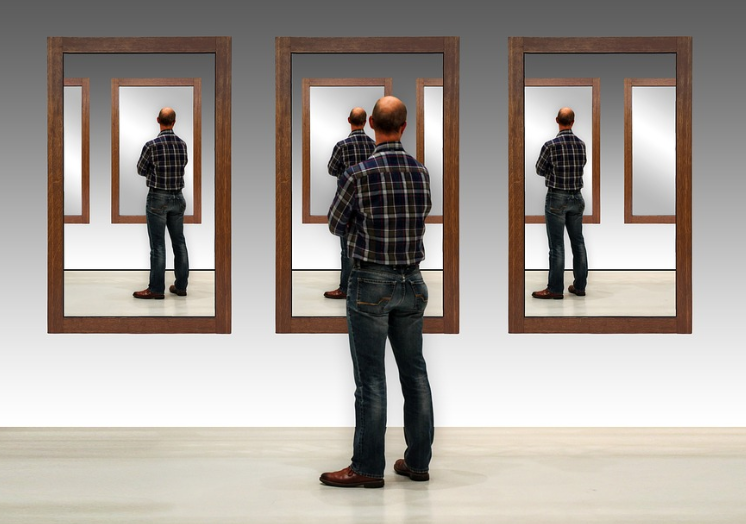How Can Visualization Make Things Happen?
Discover how can visualization make things happen and how to improve one’s health.

Selfpause Affirmation App
Download the app to get 1,000’s of affirmation meditations and everything you need to write, record and listen to your own.
Positive emotions

Research indicates that positive emotions can facilitate the process of visualization. In addition to creating a more positive mental environment, these emotions can improve a person’s health. They also broaden their thinking and attention, allowing them to tap into more creative resources. Moreover, they can increase their openness to critical feedback and new experiences.
In addition to improving your mental state, you can also use visualization to improve your performance in difficult situations. For example, athletes can visualize scoring a goal on game day to help them perform better under pressure. People suffering from anxiety can use visualization to create positive feelings in the face of stressful situations.
Positive emotions are good for your health, so it’s important to focus on experiencing them whenever you can. These feelings can include joy, relaxation, friendship, and kindness. Practice making time to feel these feelings, as they can become habitual and improve your day. It’s also helpful to practice visualization exercises to help you feel better on a daily basis.
Although positive visualization isn’t a shortcut, it can strengthen your determination to reach your goal. If you’re struggling with self-doubt and motivation, positive visualization can help you overcome these obstacles. By thinking about the outcomes you want, you’ll be more likely to make them happen.
Repetition

Repetition and visualization are key to mastering a skill. They help you focus and target your ideas and create a clear picture of your goal. Both techniques work by transforming energy into action in your brain. Once you become accustomed to practicing them, you will find that you can accomplish whatever you set your mind to.
Reducing stress

Visualization is a great way to relieve stress. It helps to relax and picture a problem-solving scenario. This is a powerful technique that can be used anytime you feel stressed. Try using visualization techniques throughout the day. The key is to practice them as often as you can. It will take some time, but eventually, your mind will get used to this technique.
The first step in relieving stress through visualization is to imagine yourself in a relaxing memory. To do this, find a quiet place and sit down. Close your eyes and imagine that you are in a calm and beautiful place. Use your imagination to picture every detail of the memory, including the environment. If possible, try to picture tangible objects.
If you are unable to imagine a specific scene, try using your senses. The more detailed the image, the more likely you are to feel relaxed. You can also practice relaxation techniques, such as deep breathing. These techniques are proven to reduce stress and improve overall well-being. But before you begin using visualization to relieve your stress, you should seek the advice of a qualified health professional.
The visualization technique is most effective when it is done in a relaxed environment. You should remove any heavy jewelry or other restricting clothing before you begin. The environment should also be free of distractions. Then, sit in a chair or lie down on a comfortable surface.
Creating triggers for the subconscious mind to act on
Creating triggers for the subconscious mind to do certain things can help you make your visualizations more effective. For instance, if you’re training for a powerlifting competition, creating a music playlist you’ll listen to before the competition is a good way to get your mind focused on your performance. Similarly, chewing gum can be a trigger for visualization. The subconscious mind responds well to these sensory inputs, and the visual experience helps the subconscious mind make positive associations.
Creating a “happy place” to destress

Visualization is an effective technique for reducing stress. It involves picturing a place that is pleasant to you. It can be a familiar place or an imaginary one. Whatever your goal is, visualizing a happy place can help you achieve it.
The first step in destressing with visualization is to find a place that is quiet and peaceful. Next, sit in a comfortable position. Creating a “blank canvas” in your mind will help you visualize a solution that would alleviate your stress. Then, fill in the blanks with the details of the scene. Make sure to imagine every detail – the environment, the people, and the objects.
Everyone has a “happy place.” It is a special place that makes them feel relaxed, secure, and happy. This place can be a boat ride, an afternoon on the beach, or a room full of family and friends. The important thing is that it soothes your racing mind. While most people visualize things they want to happen, it’s important to be realistic about what you envision.
If you want to make visualization a regular habit, create a happy place in your mind. Then, visualize it and you’ll experience peaceful moments in your life.
Creating positive mental images
Creating positive mental images can affect not just your mood but your behavior as well. For example, when you feel confident about something, you’re more likely to imagine the future positively. Conversely, when you’re depressed, you’re less likely to imagine a positive future.
Our Top FAQ's
Visualization can be used in a variety of ways to make things happen. For example, a project manager might create a Gantt chart to visualize the timeline and dependencies of a project, which can help to ensure that tasks are completed on schedule. Similarly, a business owner might create a sales forecast chart to visualize expected revenue and make decisions about resource allocation. Visualization can also be used to communicate complex data or ideas in a more accessible way, which can help to persuade others to take action.
Visualization can be an effective tool for goal setting because it helps to make goals more concrete and actionable. By creating a visual representation of a goal, it becomes easier to break the goal down into smaller, more manageable steps and track progress along the way. Visualization can also help to keep motivation high by providing a visual representation of the progress that has been made towards a goal.
Some best practices for creating effective visualizations include:
- Choosing the appropriate type of visualization for the data or message being conveyed (e.g. a line chart for time series data, a bar chart for comparing categories)
- Using clear, concise labels and titles to make the visualization easy to understand
- Ensuring that the visualization is accurate and properly reflects the data or message being conveyed
- Using appropriate scales and axes to accurately represent the data
- Using colors effectively to help communicate the message
Visualization can be an effective way to communicate ideas and influence others because it allows information to be presented in a clear, easy-to-understand format. By creating a visualization that effectively communicates the key points of an idea or proposal, it can be easier to persuade others to take action.
Visualization can be used to identify patterns, trends, and insights that can lead to action by allowing data to be visualized in a way that makes it easier to see patterns and trends that may not be immediately apparent in raw data. This can help to identify opportunities for improvement or areas where action is needed, and can also help to identify areas where further research or investigation may be necessary.
